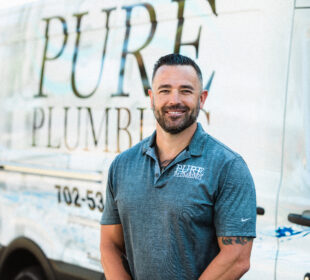As a homeowner, there are plenty of do-it-yourself projects that, with the proper preparation and understanding of the problem, do not require calling in a professional. For instance, how to fix a leaky faucet or solving flushing problems, are both simple projects for anyone with a little patience and determination without needing to call in the cavalry. Another such practice for a cleaner, healthier home, is preventing black mold from growing in damp, under-ventilated spaces. If your home is infested with black toxic mold, however, please do not hesitate to call an emergency plumber for assistance to remove the hazard.
How to Remove Black Mold Once It Sets In
While potentially hazardous to your health if exposed to high toxin amounts of black molds, such as headaches, fatigue, nausea, and lung and eye irritation, if the mold has not had a chance to deeply penetrate the foundation of your home, the removal and cleanup of such an issue is straightforward. Black mold can be removed with several solutions: ammonia, bleach, baking soda, vinegar, peroxide, borax, or even tea tree oil. It is ill-advised to mix these solutions as the combinations can sometimes be toxic themselves. Never clean without the proper protective material, such as gloves, a face mask, goggles, and proper ventilation, as this could lead to further exposure that may affect your health. Essentially, using any of these products in their recommended quantities (such as three to one solution of water to bleach, for instance) on the affected areas before taking a scrub brush to the outbreak will likely remove the problem altogether.
Mold removal is a process that requires patience and determination, as it is not necessarily the kind of thing that is easily accomplished in one succinct cleanse, sometimes taking multiple scrubbings and several products that oftentimes cannot be mixed. You will want to make sure to close your vents before tackling a room, such as a bathroom where the spread of black mold is most common, to keep the mold spores from spreading. Open windows are key to proper ventilation within a confined space. Simply continue to clean the area until mold spores have been removed. At this point, to prevent rampant mold growth in the future, some homeowners choose to seal the area with mold-killing primer and mold-resistant paint that will kill any existing spores and fungal stains and hinder future spore growth.
Ways to Prevent
Though it may come as a surprise to some homeowners, it is a fairly simple and low-effort practice to prevent mold and mildew growth in dark, damp areas. Mold spores and mildew can start to grow on damp surfaces within 24-48 hours, so keeping any damp spaces dry through dehumidifiers, and fan vents, and wiping down any damp surfaces, will greatly reduce the risk of fungal development. Bathrooms and basements are typically problem spaces, and regularly cleaning these areas and keeping them dry and aerated, as well as laundering fabrics frequently keep fungi spread to a minimum. Fixing any plumbing leaks as soon as possible and preventing rainwater from penetrating your foundation will also help eliminate risk.

